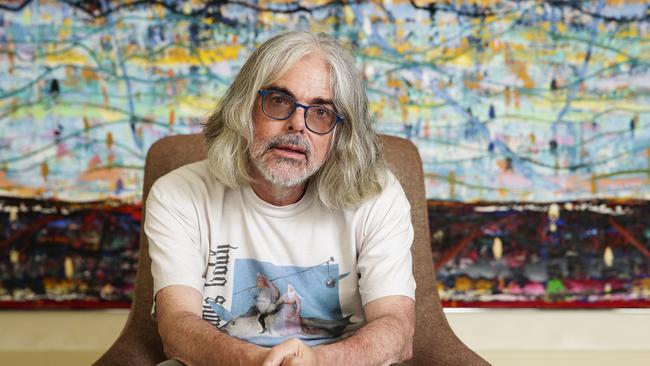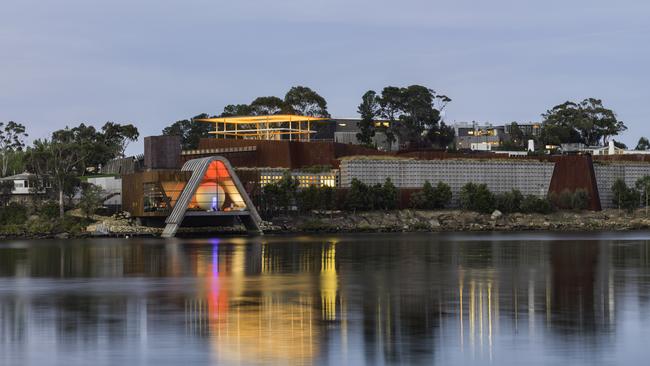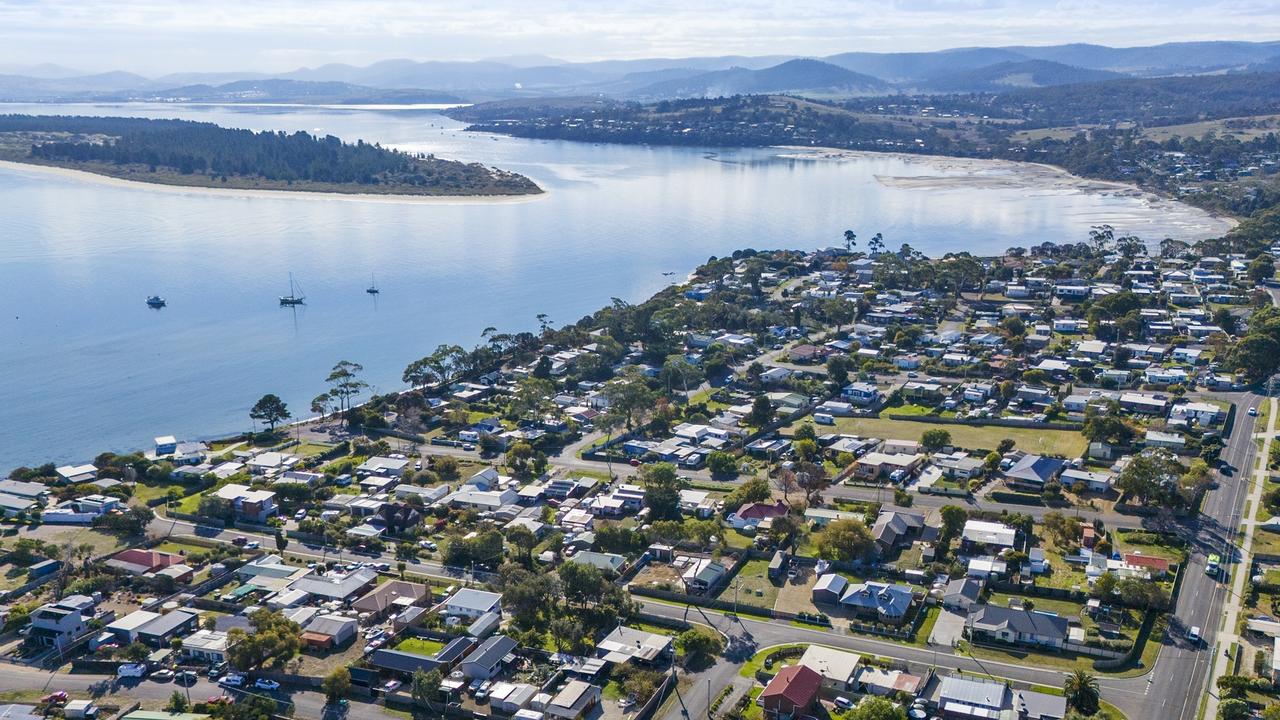David Walsh on the success of Mona
Is the success of Mona driving the Hobart arts scene ... or stifling it?

Tasmania
Don't miss out on the headlines from Tasmania. Followed categories will be added to My News.
I HAVE been asked to comment on the future of our arts scene.
I guess I’ve been asked because the “success” of Mona creates the illusion that I know what I’m talking about.
While I was meddling with things I don’t understand, I inadvertently became a minor celebrity.
My mate Kenneth Train recently offered me some sage advice — “Celebrities should just shut up.”
Unfortunately, I like the sound of my own words.
So let me provide an executive summary of the rest of this article. More stuff should be encouraged, without particular recourse to judgment over its quality.
To start, I’m going to do something I haven’t done in the Mercury/Sunday Tasmanian before — get a little mathy.
Cities are complex entities with many interacting characteristics, so it may be surprising that many of those characteristics follow universal rules.
Scaled by population, bigger cities are more efficient than smaller cities. And the way they are more efficient follows a power law.
Doubling city size requires only 85 per cent more infrastructure and produces only 85 per cent more carbon emissions (are more green). But doubling city size also increases a bunch of nice things faster than 100 per cent.
Among these are wages, GDP, patents (a proxy for innovation) and people employed in the cultural sector (a proxy for creativity).
All of these grow about 15 per cent faster than linearly (it’s not all good though — so do, for example, rates of murder and traffic jams).
The trick in managing cities, then, is to decouple these positive nonlinear scalings from population growth and their negative twins.
Here, of course, I’m talking about creativity, and I’m talking about Hobart, but the arguments equally apply to Launceston and other population centres.
I’ve seen a few comments suggesting that Mona damages the local art scene — that it’s a bullying big brother that always gets its own way.
That hurts, and the reason it hurts is that it’s almost certainly true.
The big players — the University of Tasmania, the Tasmanian Symphony Orchestra, and some galleries and bars benefit from Mona vastly expanding the audience.
Mona does present lots of local content, particularly at the festivals, but the very act of making choices suppresses those not chosen.
I’m concerned that Mona will slice through the grassroots of creativity, and that can’t be good for the future of our arts.
I’m also more concerned that Mona will give governments an excuse to shirk their responsibility to the arts.

On the other hand, we are a social security scheme for about 100 artists who spend a day or two a week working at Mona, and making stuff the rest of the time. The future is ever immune to prosecution by the present.
However, getting back to the way cities (and by extension, other social entities) grow, I can reasonably forecast that growing Mona will grow visitor numbers, employment and local participation superlinearly.
The investment in Mona (hotel, extensions) will more than double in the next five years (council, cash, community, and credit permitting).
That’ll grow Mona’s cultural activity by about a factor of three, but there is a limit to how many visitors Mona (and perhaps Hobart) can handle. The upside is economic activity and self-belief for Hobart.
The downside may be a further suppression of non-Mona cultural activities.
What to do? If local and state income grows, the allocation to grassroots arts should expand superlinearly also, at a power of 1.15.
I think it should be proxied by visitor numbers, with a baseline at the beginning of 2011. And, if Mona starts making a profit from a casino, legislation should require that some of that profit is spent locally on creative enterprises. Maybe the other casinos should follow suit.
Why do bigger cities have disproportionately higher activity rates?
The reason is embedded in the number of underlying interactors.
There can only be one interaction pathway between two people, three between three, six between four, and 4950 between 100. It grows, obviously, much faster than linearly.
Nassim Taleb talks about exploiting this effect by being out there: don’t stay home watching TV (fun), go to parties (often not fun, but you may meet your future husband or have a creative idea seeded).
Mona corrals creativity — we need to encourage people to do their own stuff.
A bunch of weird (or straight) little un-Monas will turn Hobart on its head, and shake cash out of the pockets of the upside down visitors. The more stuff there is, the more people will participate, and they will participate at disproportionate rates.
As for me, I’ll continue to meddle with Mona (unless I meet someone with a better idea at a party, or maybe Mofo or Mercury letters).
Mona’s success is somewhat fortuitous, of course, but it, and I, need to stay the course.
Our charter is to be odd, thought-provoking, adventurous, ungainly, swerving, boisterous but always contemplative. I need to resist the push towards the centre.
We just opened a new building — Pharos — which says something about my need for the ritualistic without my need for the metaphysical (and I threw in a little joke about my mortality — the art is too big to take out through the doors).
This month we’ll start on some tunnels that contain a few more works, and then we’ll move on to the hotel and, maybe, that casino.
Until a few weeks ago I thought that was the end of my ambition. But I’ve just had a scheme I just can’t shake. We’ll see. I know what happens to a too-tall house of cards.
I mentioned the forthcoming tunnel system.
The centrepiece is a work by Alfredo Jaar — a series of chambers that recapitulate Dante’s Divine Comedy. I don’t know if we can make Heaven as angelic as Dante might have liked, but our hell may well be, “paved with good intentions”.
The originator of that quote, Saint Bernard of Clairvaux, was Dante’s last guide in Heaven and an appropriate emissary of the danger of certainty, both in the here-and-now, and in the where-and-when.
Forecasting is fraught, particularly about the future (to paraphrase Niels Bohr, who did not think atomic weapons feasible).
Art can serve as a warning to avoid certainty, because certainty is the path to hubris. But little art, people creatively co-operating — that can make a good city better.
In the meantime — let’s do something that has consequences we can forecast.
Let’s be rid of those pesky pokies.



